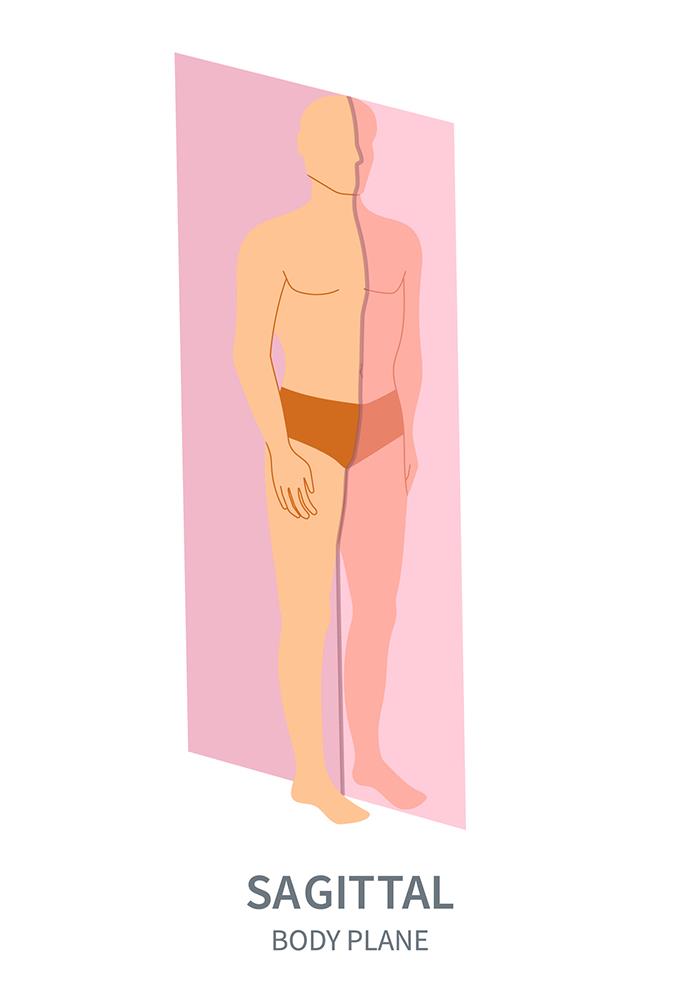courtesy of beachbodyondemand.comImagine the grace of a gymnast in full flow, their body twisting and turning in a mesmerizing dance of athletic prowess. This spectacle of movement isn't just art; it's a science that can be broken down into three distinct categories, known as the planes of motion. Understanding these planes can revolutionize your workout, making it safer, more efficient, and infinitely more enjoyable.
Decoding the Planes of Motion
The concept of planes of motion offers a precise way to analyze and understand every human movement, from the simplest daily tasks to the most complex athletic endeavors. These planes, imagined as invisible sheets dividing the body, categorize movements and provide a framework for analyzing physical activities.
Sagittal Plane: The Forward March
The sagittal plane slices the body into left and right halves, encompassing movements that occur in a forward or backward direction. Common exercises like lunges, squats, and push-ups, as well as everyday actions like walking, fall within this plane. It's the domain of flexion and extension, where the body bends and straightens in harmony.
Frontal Plane: Side-to-Side Action
Dividing the body into front and back halves, the frontal plane is all about lateral movement. Imagine standing with your back against a wall; any movement that keeps you flush against that wall, like side-stepping or raising your arms, is a frontal plane movement. It's crucial for sports requiring quick side-to-side transitions, enhancing agility and balance.
Transverse Plane: The Power of Rotation
The transverse plane cuts across the body, separating the top from the bottom and encompasses rotational movements. This plane is where the body twists and turns, engaging in movements that are pivotal for generating power in athletic endeavors. From the ballet dancer's pirouette to the power behind a baseball bat swing, the transverse plane is key to dynamic motion.
Anatomical Insights
The study of planes of motion is peppered with specific anatomical terms that describe the directions and types of movement. Terms like anterior and posterior denote the front and back of the body, while abduction and adduction refer to the movement of limbs away from or towards the body's center line. Understanding these terms enriches your comprehension of human movement.
The Importance of All Three Planes
While many workouts focus predominantly on sagittal plane movements, incorporating exercises that engage the frontal and transverse planes can prevent injuries and promote a more balanced, comprehensive fitness regimen. This holistic approach to movement not only enhances athletic performance but also contributes to a longer, healthier life.

courtesy of beachbodyondemand.com
Embracing the Complexity of Movement
It's important to recognize that no movement is confined to a single plane. Our bodies are marvels of biomechanical engineering, capable of performing complex motions that span all three planes simultaneously. While the planes of motion offer a useful framework for understanding movement, they are not rigid categories but rather tools to enhance our appreciation and execution of physical activity.
In conclusion, the planes of motion are more than just scientific jargon; they are a lens through which we can view and improve our physical endeavors. By incorporating a diverse range of movements into our workouts, we can achieve a level of fitness that is not only about looking good but feeling strong, capable, and alive in every moment.
*** Supporting our sponsor makes a difference *** |
| [TAG2]
Image Credit: Stacy Robinson / AuthorsUSA.com |
Did you miss our previous article...
https://naturesmart.us/fitness/unlock-your-athletic-potential-with-amoila-cesars-performance-academy
 HealthWellnessFitnessBeautyVideosPrivacy PolicyTerms And Conditions
HealthWellnessFitnessBeautyVideosPrivacy PolicyTerms And Conditions
